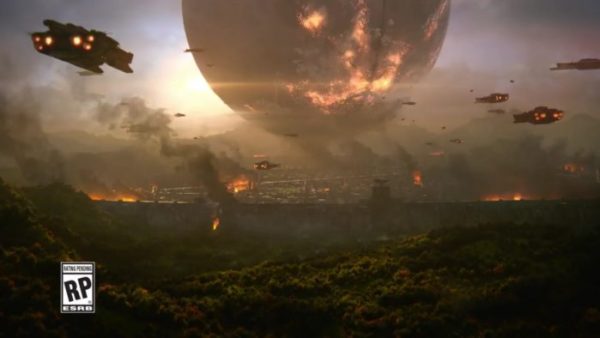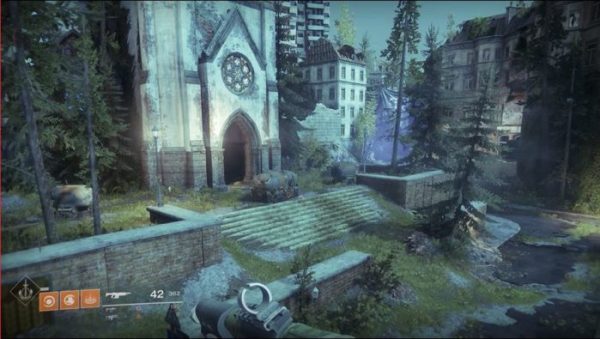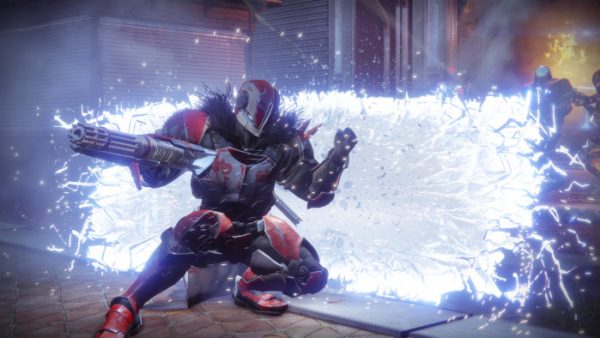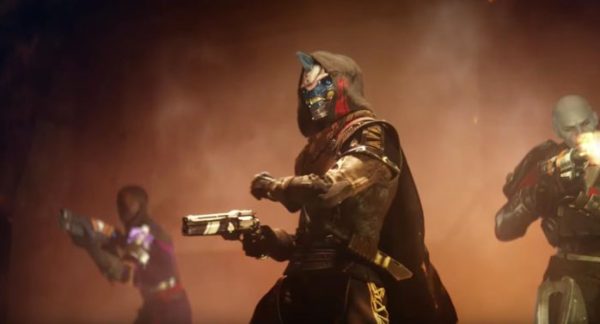Story That Matters
Destiny 2 is finally rolling out across the globe and guardians everywhere are preparing to further the legends they established over the past three years (while some newcomers are just forging their own from scratch). When it was first revealed the game didn’t look too different from its predecessor, prompting many to quickly call it a glorified expansion rather than a worthwhile sequel.
Honestly, you couldn’t be blamed for jumping to that conclusion in this day and age with so many series consisting of rehashed games. However, based on our time so far, Bungie has put the effort in to making it a worthy sequel. Just how did they do that? Let’s take a look, starting with its story.
Destiny 2 has a story. A legitimate, engaging, worthwhile story. Players will see the Traveller brought to its knees (we know it’s a globe, just try to appreciate the metaphor), by Ghaul and his Red Legion. The story that kicks off from there is one of loss, hope, and redemption as players seek out a purpose in this dark new world.
The story is not just relegated to main campaign missions either. There are Adventures which provide extra lore to flesh out worlds and characters, there’s lore tied to gear that you can pull up and read from your menu in-game. After all of the complaints of there being no story in the first game, which weren’t unreasonable, Bungie stepped it up and provided a narrative that permeates every single aspect of the game.
It’s easy to find yourself caring about the NPCs you meet this time around, and it’s not just for comedic relief either (we’re looking at you, Cayde-6). They’re just very well done, on a level that wasn’t present in the first game.
Mission Structure
Missions in Destiny 2 are head and shoulders above what returning players may remember from the first game. For starters, you won’t find yourself simply holding down rooms every single time (seriously, the Ghost was a horrible hacker). Instead, missions flow more like story missions should. At times they feel like mini raid segments as you juggle objectives and keep pressing forward in large areas, rather than constantly moving through small hallways.
The same can be said about Strikes which are far more challenging this time around and offer multiple layers of challenges to clear. Even the boss fights require a lot more thinking and strategy beyond “which overpowered weapon should I bring this time.” Everything feels like unique content, offering different takes on the action and multiple strategies to employ.
It’s definitely a step up from what we had before, with a chopped up story and less than inspired quests. Sure, things improved with The Taken King and Rise of Iron, but those still pale in comparison to Destiny 2.
Defined Subclasses and Versatility
While Destiny was certainly fun to play, to us at least, the classes did leave a bit to be desired at times. It’s not that they weren’t cool, we all have our particular favorites. But they didn’t really give you much of a reason to build diverse teams or even bother to try something you didn’t already like. And the upgrade system left most players playing as the exact same build.
This time around, in Destiny 2, classes have abilities that are 100% unique to them. Such as the Titan’s ability to throw up barriers and create overshields for allies, or the Warlock’s ability to heal team members. On top of that, each subclass has a path that helps to further define how each one can be utilized in battle. It allows for many more fireteam makeups than what players experienced in the first game, providing a much deeper experience.
Weapon Systems
Weapons have received a drastic change in Destiny 2 that really change how the game is played over all. The first change is weapon categories. No longer do guardians have primary, secondary and heavy. Instead, they have kinetic, energy, and power, which allows for more versatility in loadout building.
The categories each have their own specific perks. For example, energy weapons are great at taking out shields and other guardians who have activated their super. New weapon types like Trace Rifles, Submachine Guns, and Grenade Launchers provide more options when it comes to dismantling your enemies. But unlike the first game, not all are restricted to certain slots, taking advantage of different categories rather than just say, a guardian can only carry a Hand Cannon in the top spot.
It seems like such a small change, opening up different slots for different weapon types. But it makes a world of difference when you realize you don’t have to sacrifice a weapon type you like for another. Also, modding weapons replaces weird RNG and upgrades. You can tailor your loadout to your liking with the right mods. But the actual drops are the same as everyone else. Luck won’t save that Hunter you’ve been gunning after this time.
The Worlds
The biggest change for Destiny 2, and the one that really makes it feel like a new game rather than just a simple expansion, has to be how players explore and interact with the worlds. In the first game, public spaces like Earth, the Moon, and Mars felt like nothing but barren, grind spots. You went there to get some resources, but if it were really up to you, you’d probably never set foot there again. That most likely won’t be the case for you in Destiny 2.
The worlds feel like… well, actual worlds. There is a ton of activities, each which grant useful rewards. You can even use a map (yup, you have an actual map) to navigate and fast travel (no more orbit for us). Set waypoints, see where the next Public Event is taking place as well as when it starts. Locate Lost Sectors and Adventures. The worlds are so inviting, and you have really good reasons to stick around this time.
Essentially, Destiny 2 is a true evolution of what came before it. It’s easy to simply say it should’ve been an expansion. But once you get your hands on it, there’s no denying that this is indeed a much deeper game that is worthy of the sequel title.





